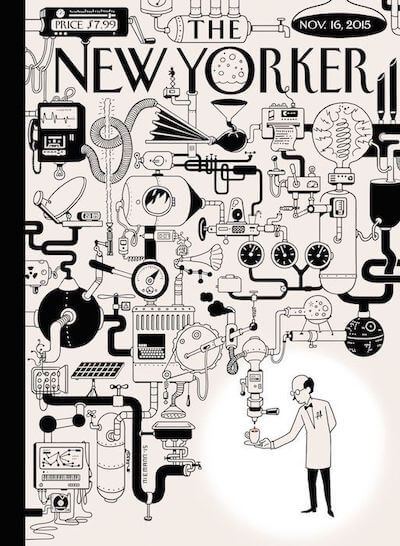The Dreaded Dregs of Procedure
By Armando Lucero | The Hungry Imagination

When perceptually engineering a composition as artistic expression or entertainment, there is one potential susceptibility that keeps coming up, the dreaded dregs of a procedure. Too much of an unmotivated process and the viewers will suspect something amiss. However, a perfectly executed choreography may also tip viewers to consider a secret plan is in use, even when each action has logical motivation.
Ideally, we should reduce unaccounted procedure to its minimum or until it merely becomes incidental; like a fidget. Conversely, for the too perfect choreography, where viewers sense deliberate actions around subterfuges that should remain hidden, then adding visual noise like a fidget would be helpful to disguise it. For the viewers perspective, aim for something that is not too “noizy”[1] yet not too perfect.
A heavily-laden procedure is not a bad thing in and of itself so long as it is dealt with appropriately. How deceptive is the choreography is the issue. For example, if twenty steps are required to execute a ploy, and there is no other way to reduce further, it can still be very deceptive if delivered without the observers’ awareness of chicanery and may even enhance the artifice. Some may consider the number too high, even ridiculous, but the tactic can be advantageous. So how many layers of deception may be added? As many layers required to achieve the goal so long as it does not hinder the clarity of effect and the gain remains more significant than the loss.
Multi-step subterfuges have a significant advantage if executed properly. There are just too many steps for observers to back engineer so unraveling them is difficult to impossible. It becomes a protective barrier of information overload, so long as sense-making tools like video rewind are not used. Most significantly, it offers potential opportunities to achieve what could not be done any other way. Obviously, these are advantages, but it is already tough to deal with simple procedure let alone multi-step heavily-laden processes, so they are incredibly challenging and not for the faint of heart. Which is why I find them fun!
Never do a trick twice & Video
Video offers rewind and infinite viewing which can destroy any false-memories, forced perspectives, psychological ploys, misdirection, change blindness, intersecting moments, and many other hidden subterfuges we as composers of legerdemain work so hard to protect. Video also does not filter the way our minds do so it does not represent what we experience live. Not to mention how often people pause and rewind before getting to the end, which defeats the entire purpose and potential. So instead of astonishment, we get hindsight bias.
It really does not take much for people to back-engineer an effect on YouTube. It might as well be a set of instructions. If a viewer only has one idea of possibility then all it would take to confirm their suspicions is to rewind and observe, after that the remaining secrets just fall apart as easily as a broken string of pearls. If you doubt this then just search any trick on YouTube and read the comments below. The more popular it is then the more people will examine and put forth the effort to unravel the mystery.
When there is an unaccounted procedure, that viewers have a reason to suspect because it seems incongruent, oddly placed, without cause; hence, novel, then it should be dealt with. Find a way to give it a purpose that makes sense to the viewers. If the hand must move one way or that way then provide viewers with a reason to understand why it happens. Hence; the real purpose; to execute a deception, is wrapped with another goal; to disguise it from viewers.
Once every action is accounted for then this will usually unburden the viewers from feeling it and so remove potential suspicion. This is only part of the job. Afterward, create a cognitive capture to keep the viewers focus away from the deception; by using and/or creating subtext or context to protect the hidden-text. Then all peripheral actions will be absorbed by the viewer yet free of scrutiny, as they are given less attention. Remember, attention costs, always.
The ensuing result should be that all procedure is accounted for in the mind of the viewers’. Next, check if it feels too perfect, to the point where viewers sense a planned choreography of artifice. If this is the case then adding more “noize,” yes more procedure, may help to diminish the sense of a plan. Aim to perfect by removing all “noize” but once achieved, put it back, but not in the same way. It should now enhance or embellish security. Remove only to replace with what is merely disguised noize, such as affirmations, intersecting moments, information interference, synchronized coupling, etc.
If you find yourself overwhelmed with the feeling that there is no way to resolve the dregs of procedure, and have seemingly exhausted all possible solutions mentioned above, then there may be one more to try. Adding a subplot as an additional phase can absorb the noize, and give viewers justifiable reasons to the previously heavy-laden procedures. Not just any subplot but one created specifically to provide purpose to the moves that were suspect.
Lastly, find a way to deliver all of this with an artful expression or entertainment, which is the goal after all.
Sincerely, Armando Lucero
-
Noize: a verb to describe all things regarded as sense irritants, as well as perceived incidentals and/or unaccounted procedures; including noise (auditory) and light pollution (visual). Random disturbances of signals which can become burdensome for information processing and affect all aspects of nervous system function. (“As I could not find a word to explain what I needed ”Noize“ was created.”) ↩

Copyright © https://thehungryimagination.com/